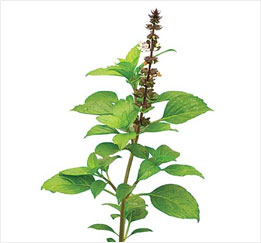A medical science so exhaustive that the Vedic Rishi scientists felt it would be impossible for any one person during his lifetime to master it all, so, meticulously the voluminous science was made available for study and practice in 8 separate disciplines without disturbing the basic fabric of its principles. Thus it facilitated the ease of practice according to conditions that needed medical attention by a specialist. The eight main branches of Ayurveda are:

Tulsi is one of the most revered plants in India. In Ayurveda, it is often said to be the 'elixir of life'. A sacred plant in Hinduism Tulsi means 'the incomparable one in Sanskrit'. In Ayurvedic tradition, Tulasi is used to support the normal respiratory function, promote good health and longevity. It is grown all over India, in houses, gardens and temples.